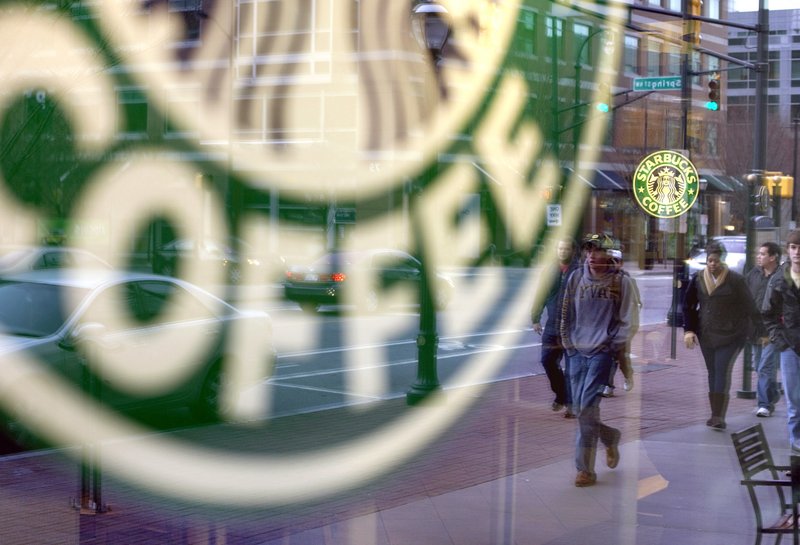NEW YORK – Another Starbucks may soon pop up around your corner, with the world’s biggest coffee company planning to add at least 1,500 cafes in the U.S. over the next five years.
Starbucks said Wednesday that it plans to boost the number of locations in its biggest market by about 13 percent by 2017. In the broader Americas region, the company plans to add a total of 3,000 new cafes by that time.
Starbucks also is planning to expand overseas, particularly in China, which is expected to surpass Canada as Starbucks’ second-biggest market in the next two years. By that time, Starbucks says it will have 20,000 stores globally, up from about 18,000.
The upbeat expansion plans mark a turnaround from Starbucks’ struggles during the recession. After hitting a rough patch, the company brought back founder Howard Schultz as CEO in 2008 and embarked on a massive restructuring effort that included closing 10 percent of its U.S. stores.
Cliff Burrows, who heads Starbucks’ domestic business, said the problem wasn’t that Starbucks was oversaturated, but that the company hadn’t been careful about its store openings. In the years leading up to the downturn, the company was opening well over 1,000 stores a year. That led to cafes in locations where signs or traffic might not be optimal, he said.
Burrows said Starbucks has gotten more sophisticated, and noted that the cafes opened in recent years are among the company’s best performers. Sales at new cafes are averaging about $1 million a year, for example, above the company’s target of $900,000. It costs about $450,000 to build a new cafe.
Since Starbucks already has a broad footprint, the company’s expansion is intended to “deepen” its presence with additional stores in markets across the U.S., said Troy Alstead, Starbucks’ chief financial officer. That means establishing stores — including drive-thrus and smaller cafes — in more convenient locations for customers. And even as it expands, Starbucks said it expects to maintain growth at cafes open at least a year. The figure, a key metric of health, has ranged between 7 percent and 8 percent globally in the past three years.
The continued U.S. sales growth will be fueled by the new products, such as Evolution premium juices and Via single-serve coffee packets. Looking forward, Starbucks is also looking to improve its food menu and is testing a new menu of baked goods from La Boulange, a small San Francisco-based chain it acquired earlier this year. The new croissants, loaf cakes and other items will spread to about 2,500 cafes next year and go national sometime in 2014, Burrows said. The company says only about a third of customers currently buy food with their drinks.
In a test aimed at building sales in the evening hours, the company also started serving beer and wine at about a dozen locations earlier this year, with food such as chicken skewers and dates wrapped in bacon.
And most recently, Starbucks announced plans to acquire Teavana, a chain that has 300 locations in shopping malls. When the announcement was made last month, Schultz said the company would “do for tea what it did for coffee.”
That includes plans to expand Teavana’s presence beyond the shopping mall with stand-alone shops that have “tea bars” that serve specialty drinks. The company declined to say when Starbucks cafes would begin serving Teavana drinks.
After a string of acquisitions in recent years to build on its core business, Schultz indicated Wednesday that the company would hold off on any additional purchases in the near future, noting that the company has “enough to handle.”
To build its packaged-goods business, Starbucks plans to let customers earn points on their My Starbucks loyalty card starting next year when they purchase Starbucks bagged coffees in supermarkets and other outlets. Customers currently earn points only when they make purchases in Starbucks stores.
The picture isn’t rosy around the globe, however. Europe remains a sore spot for Starbucks, with a key sales figure falling 1 percent in the region during the latest quarter. In an effort to boost results, the company has been closing underperforming stores in the region.
In the United Kingdom, Starbucks is also embroiled in a row over its taxes. The company has been doing business in Britain for 15 years and has 700 outlets but it has yet to record a profit — and therefore pay taxes.
Starbucks says this is due to a complex process where its taxable profits in the U.K. are calculated after royalties paid to its European headquarters in the Netherlands have been deducted.
Following criticism in the U.K. parliament and a campaign by protest group U.K. Uncut, Starbucks said this week that it was reviewing its tax approach.
Send questions/comments to the editors.



Success. Please wait for the page to reload. If the page does not reload within 5 seconds, please refresh the page.
Enter your email and password to access comments.
Hi, to comment on stories you must . This profile is in addition to your subscription and website login.
Already have a commenting profile? .
Invalid username/password.
Please check your email to confirm and complete your registration.
Only subscribers are eligible to post comments. Please subscribe or login first for digital access. Here’s why.
Use the form below to reset your password. When you've submitted your account email, we will send an email with a reset code.